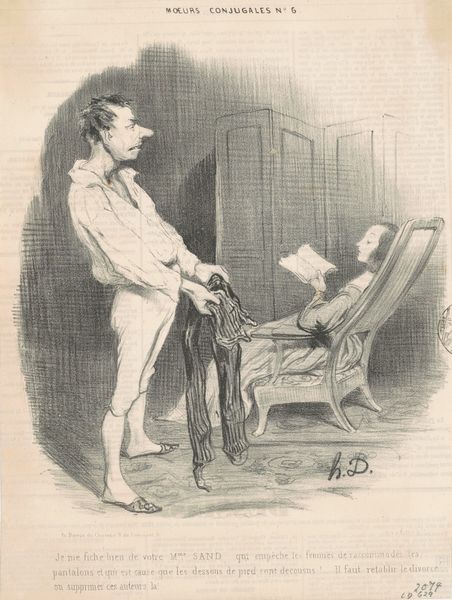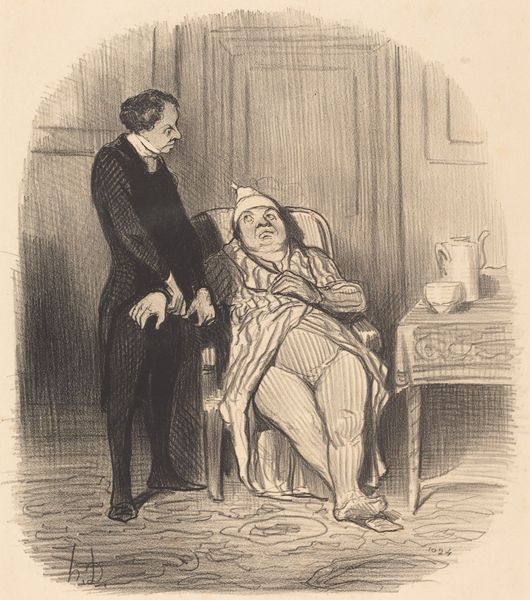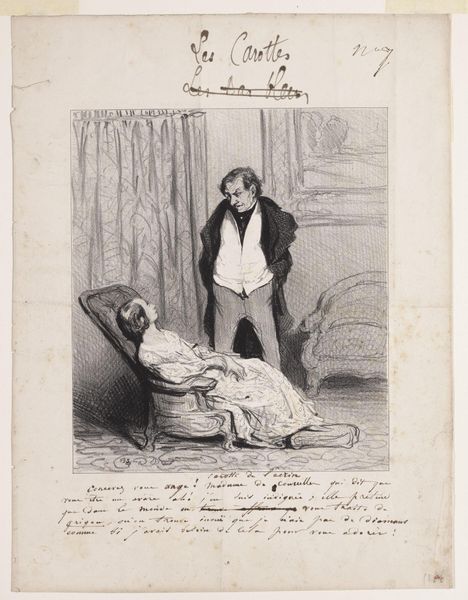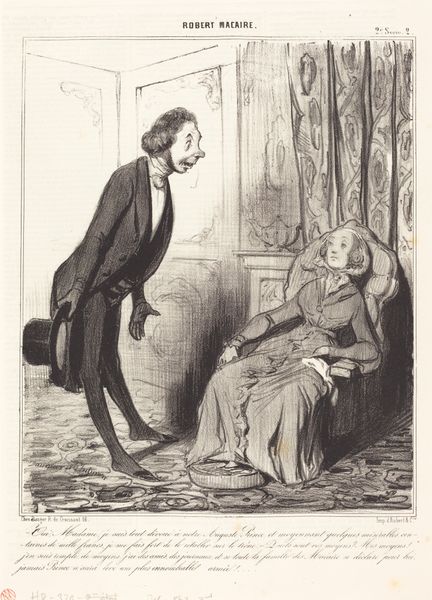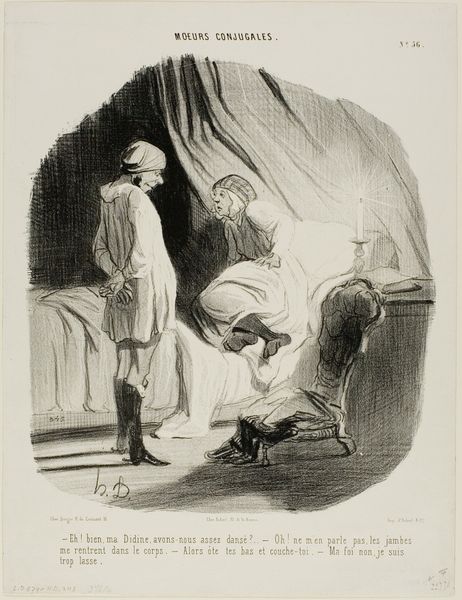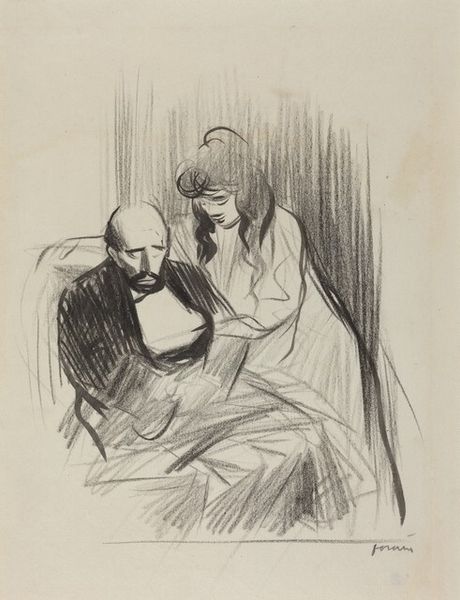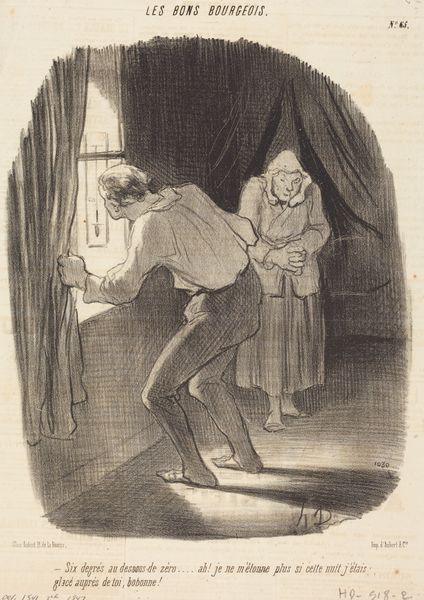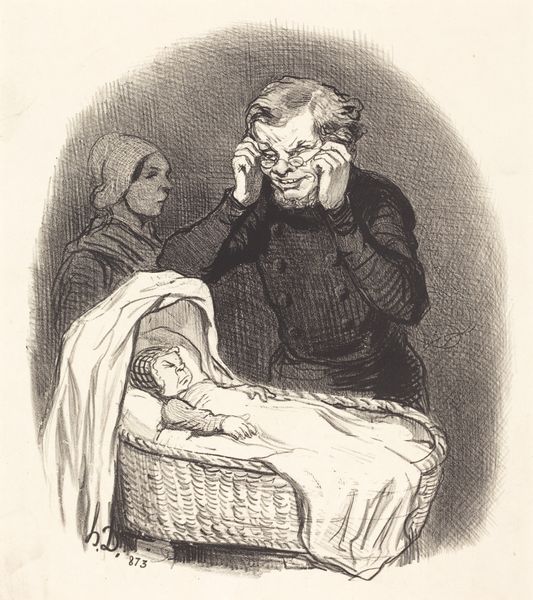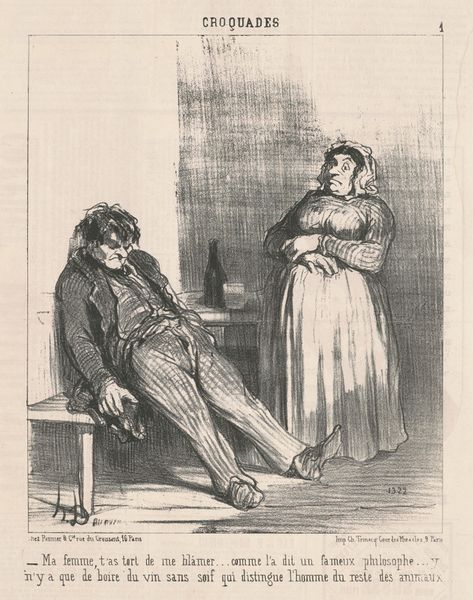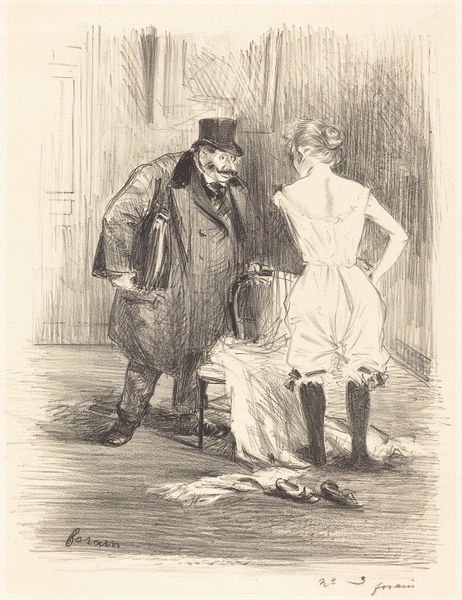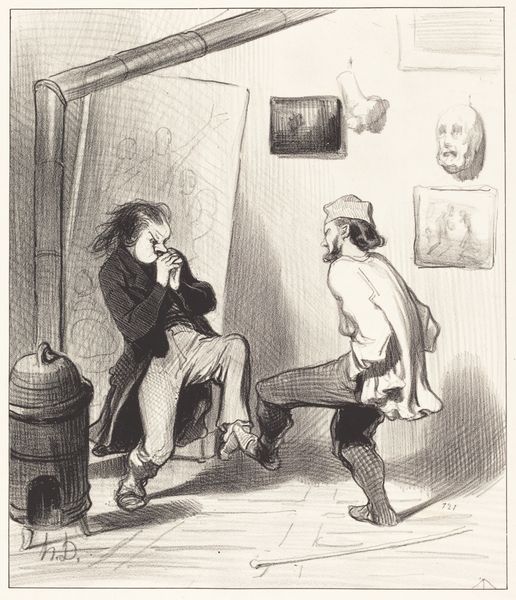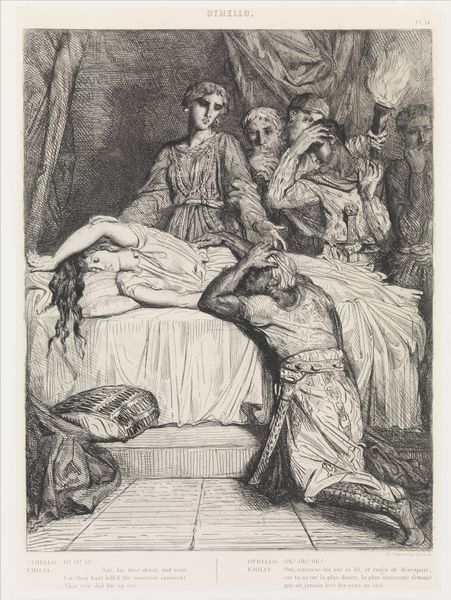
drawing, lithograph, print, pencil
#
portrait
#
drawing
#
lithograph
# print
#
pencil drawing
#
romanticism
#
pencil
#
portrait drawing
#
genre-painting
Copyright: National Gallery of Art: CC0 1.0
Editor: This is "Carotte de l'écrin," a lithograph from 1844 by Honoré Daumier. The scene feels almost theatrical, with the man looming over the reclining woman. What story do you think Daumier is trying to tell? Curator: I see this as a pointed commentary on social relations and class dynamics in 19th-century France. The lithograph's strength lies in its visual representation of power, the male figure gazing down reflects established hierarchies within social structure. Editor: So, the woman in the chair, would you see her as powerless? Curator: It's more complex than that. The pose itself, while seemingly passive, could also indicate a form of subtle resistance. This "illness" narrative has historically been assigned disproportionately to women within societal narratives, providing them unique access and forms to exert soft political power. Editor: That’s a really interesting point about the use of "illness". So it would be challenging these power structures while seemingly perpetuating them? Curator: Precisely. The print medium itself democratized access to such critiques. Daumier circulated commentary on social issues through popular imagery. What seems romantic hides layers of socioeconomic observation, and is made to circulate en masse, that it is meant to. Editor: I hadn't considered that angle of widespread accessibility at the time, very insightful. It really shifts my perspective. Curator: These details become windows to see into our relationship with media at large, it can serve as both mirror and distorter of society. I am grateful you could share this moment of consideration.
Comments
No comments
Be the first to comment and join the conversation on the ultimate creative platform.
